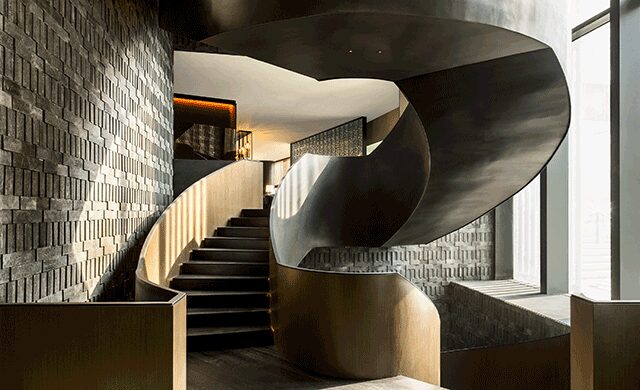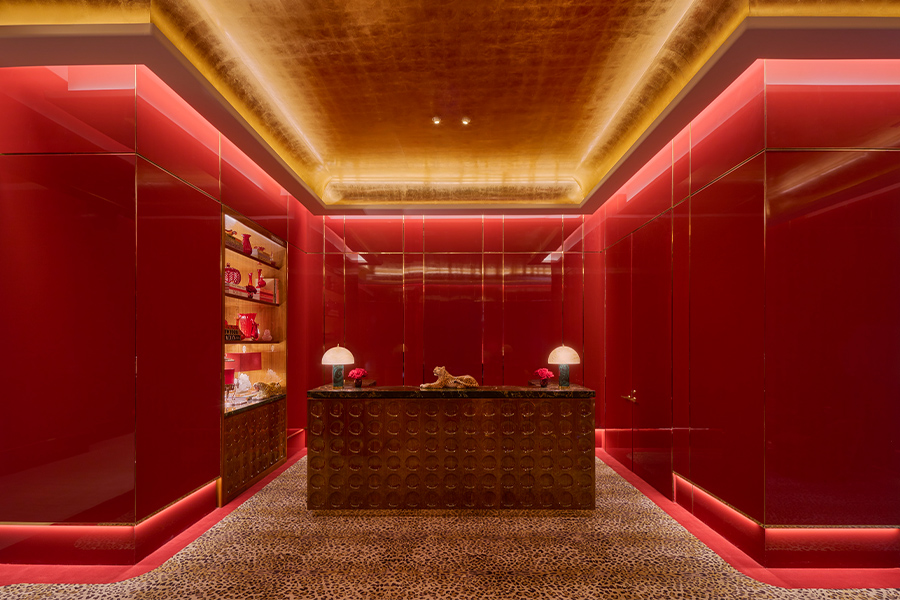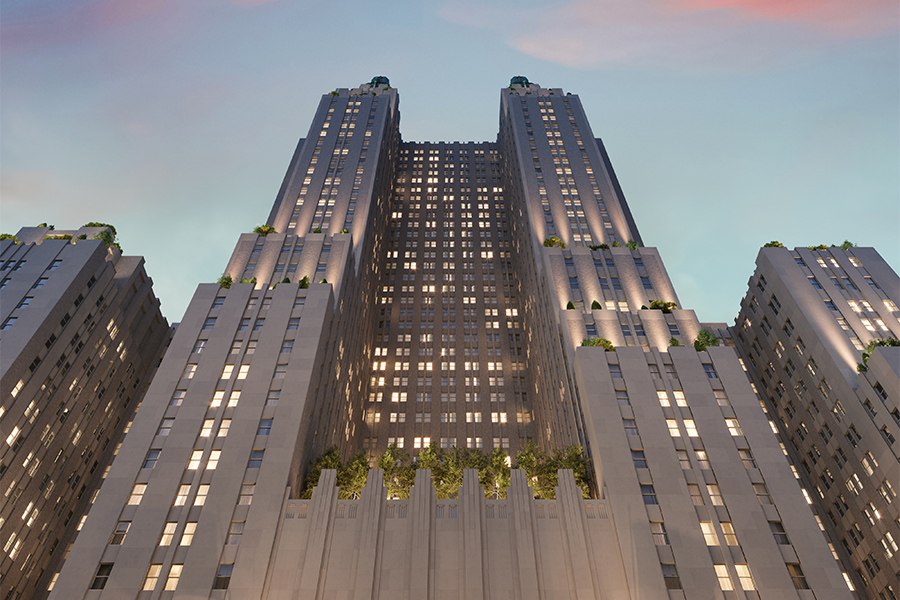For the Middle House, the much-anticipated fourth entry in Swire’s House Collective in a new mixed-use development in Shanghai, Milan-based Piero Lissoni “carried out a great deal of research regarding the [city’s] history and culture of local crafts,” he explains, visiting local artisans to understand the characteristics and particularities typical of the region. “These elements were then placed in relation to contemporary features to generate an unexpected and intriguing dialogue,” he adds.
Past meets present in the sophisticated lobby, dramatized with walls of green bamboo ceramic tile laid vertically to emphasize the double-height space, while an oversized Venetian chandelier suspended above a central round table “defines the entrance and contrasts with the calm luxury of the lobby lounge and the neutral colors of its bespoke furniture,” he says. Behind the entry, the ceiling drops to a more intimate, single-story height, with a sense of home reinforced through a fireplace, contemporary wing chairs, Chinese benches, bone-colored upholstery, and silk area rugs—all a soft and welcome divergence from the dark wood bookshelves, consoles, and side tables that populate the space.
A striking sculptural oval staircase covered in black metal plate and flanked by handmade bricks “references local tradition reinterpreted in a contemporary language,” notes Lissoni. Lined with oak, the stair leads to the 102 residences and Chinese restaurant Sui Tang Li, which is dominated by a screen featuring traditional Chinese green ceramic tiles that juxtapose the opposite bronze glass wall with its peekaboo kitchen pass through.
Lissoni’s masculine aesthetic carries into all-day dining restaurant Café Gray Deluxe with its lofty height enhanced with walls devoted to bookcases, displays of wine and spirits, and a contemporary art program. “We worked very closely with artists to develop works featuring teapots and water vessels that convey a sense of joy and sensuality, complementing the black terracotta background of the walls,” he points out. Meanwhile, Italian restaurant Frasca’s sleek black accents pop against translucent glass panels and a neutral scheme of taupe and gray.
Residences and the 111 guestrooms are separated into two towers, with the rooms chicly designed in understated monochromatic tones, purposely chosen to emphasize natural materials like dark hardwood floors. Open wardrobes in dressing areas give rooms an airy feel, while some rooms boast bronze mesh screens, highlighting a contemporary-meets-traditional aesthetic notable in artwork and carpets that “are all handmade by cutting and reassembling antique Middle Eastern carpets,” reveals Lissoni.
In contrast, the sprawling curvilinear Mi Xun Spa and wellness area “creates large perspectives on iconic architectural elements such as backlit volumes, water features, and an internal garden,” he says. Here, industrial materials mingle with local ceramics for the sequence of vertical louvers, adding a decidedly authentic touch to the otherwise minimalist space.



